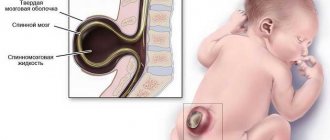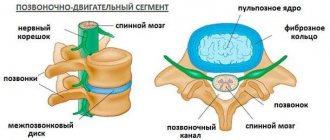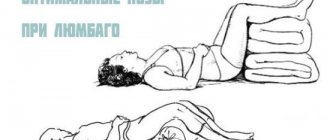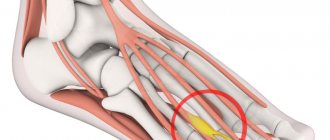How many years do people live with HIV infection depending on age?
Type 1 HIV is common on the Eurasian continent and in North and South America. This is what we will talk about.
The physiological and anatomical characteristics of the body determine how quickly the virus will progress and how long the carrier can live after infection. The prognosis depends not only on the age of the patient, but also on the mood to fight. Patients are known to live long and happy lives with a diagnosis of HIV.
How many years do children live with HIV infection?
A disappointing prospect awaits children who inherited HIV from their parents.
- The prognosis is most dire for infants who contracted the virus from their mothers in utero. In this case, symptoms appear almost immediately after birth. The disease progresses rapidly. The death of the patient or the stage of AIDS occurs within 3 years. (15-20% of HIV-positive children).
- The virus is transmitted to the baby during childbirth or through the mother's breast milk. Children infected at an early age live for about 10 years in 75-80% of cases.
- In 5% of HIV-positive children, with high-quality treatment, symptoms do not appear at all.
The lifespan of children with HIV largely depends on the efforts of their parents. To avoid dire consequences, the disease must be detected as early as possible. When registering, all pregnant women are given a referral for a blood test to detect HIV infection. In case of a positive result, the expectant mother is observed by an infectious disease specialist.
To avoid infection of the fetus in the womb, a woman is prescribed treatment during pregnancy from the 2nd trimester. Following your doctor's recommendations exactly increases your chances of having a healthy baby by up to 75%. If infection of the fetus cannot be avoided, parental adherence to treatment allows the child to prolong the asymptomatic phase of the disease.
How long do HIV-infected adults live?
Many adults live with HIV infection for 5-10 years after infection without even knowing they are infected. Then the disease begins to progress, sometimes quite quickly. AIDS is the final stage of development of HIV infection. At this stage, the immune system is completely suppressed. Without qualified medical care, people with AIDS live from 6 to 18 months. This is the time of onset of painful consequences of the disease. The period of quiet existence largely depends on the patient. Patients who persevere in the fight for years gain active longevity. By following dietary recommendations, taking medications, and adhering to a healthy lifestyle, carriers live to be 75–80 years old. At the same time, the average life expectancy of healthy people in Russia is 70 years.
To maintain the health of infected people, highly active antiretroviral therapy (HAART) is practiced, which involves:
- continuity of the course;
- simultaneous use of several drugs (3-4 names);
- constant monitoring of viral load.
How long do older people with AIDS infection live?
Before the advent of modern drugs to combat HIV, it was noted that those who were infected in old age had a faster progression of the disease. As we age, the immune system naturally weakens. ART drugs blur this distinction. High-quality treatment slows down the progression of the disease in old age.
Older people are more responsible for their health than young people. In high-income countries, pensioners can afford natural and fresh products, expensive medicines and vitamins. This allows you to significantly extend life and preserve its colors.
Failure of the 90s
The life expectancy of Russians has increased significantly compared to the early 2000s, but compared to 1990, not so noticeably.
Almost all countries of the post-Soviet space had a dip in life expectancy in the mid-90s, according to data from the 2016 Global Morbidity Study of the Institute for Health Metrics and Evaluation. In the mid-90s, the minimum level of life expectancy in Russia over the past quarter century was recorded - 63.7 years (data for 1994). In 1990, the life expectancy of Russians was 5 years longer - 69.2 years.
A steady increase in life expectancy began almost ten years after the failure - in 2006. 10 years later, by 2020, the figure reached 70.9 years. According to statistics, this is how many years a resident of Russia born in 2016 can live on average.
This is 1.7 years more than the life expectancy of a child born in 1990.
In total, life expectancy in the world has increased since 1990 in 96% of countries, by an average of 7.39 years. The global average life expectancy for a person born in 2016 is 72.48 years.
It turns out that in Russia life expectancy rates are lower than the world average.
Click to see content: Life_exp_Russia_others
In Russia, the lowest life expectancy is observed in the Far East. In Moscow and St. Petersburg it exceeds the world average. And Ingushetia, according to Rosstat, even joined the “80+” club - the only one of all Russian regions.
Click to see content: Life_exp_Russian_regions
How long can you live with HIV infection depending on gender?
Gender (sex) differences were noted before the advent of effective therapy. It was found that with the same concentration of the virus in the blood of women, the disease progressed faster.
This was explained by lower immune status - an indicator of the number of CD4 receptors. Immune status indicates how many T lymphocytes are present in the body. These cells fight viruses and bacteria and are the first to die when they encounter HIV molecules. The defense system of the fairer sex reproduced lymphocytes in smaller quantities. The immune status decreased faster.
By selecting antiretroviral therapy depending on the gender of infected people, doctors were able to extend the lifespan of both women and men by several decades. With adequate medical support, there are no differences in life expectancy with HIV infection by gender.
Compliance with biorhythms adds + 5 years
Many processes in the body are “tied” to a certain time of day. A life that is chaotic in terms of schedule confuses the body.
Just one example: if a woman works the night shift for many years, the chances that she will develop breast cancer are 2-3 times higher. “Night work” disrupts the production of the hormone melatonin - it is mainly produced at night, in the dark. This hormone is a powerful immune stimulant and antioxidant that protects us from cancer and heart disease.
Melatonin deficiency is a kind of signal to other body systems: old age has arrived, it’s time to retire. How to deal with this? Live in daylight, sleep at night - and without a night light, a working TV, a computer or other sources of “light pollution”.
Depending on the stage of the disease, how long can you live with AIDS?
The first stage occurs shortly after the virus cells enter the body. The duration depends on the individual characteristics and the amount of viral protein. Vivid manifestations of symptoms develop 1 to 4 weeks after infection:
- viral or fungal diseases in the oral cavity;
- diarrhea;
- elevated temperature;
- headaches, etc.
- After the virus invades, an adequate immune response occurs. A sufficient amount of antibodies to HIV is formed in the body. The defense system copes with the primary manifestations, after which the hidden stage begins. It is important not to miss dangerous symptoms and start antiretroviral therapy as early as possible.
- When HIV infection enters the latent stage, clinical symptoms disappear. This is the main danger. The asymptomatic stage can last ten years. Then the disease, untreated, begins to develop rapidly. Only a doctor can predict the duration of the latent phase.
- AIDS is the last phase of the development of HIV infection (stage 4). At this stage, the immune system cannot cope with its functions. The body no longer fights attacking viruses. A person suffers from inflammation of the lymph nodes, pneumonia and many other diseases. This phase is short-lived (from several months to several years) and fills the patient’s days with suffering. An infected person must make every effort to delay its onset or avoid it altogether.
- Another rapidly progressing form of the disease is turbo HIV. This is the name for the combination of the extreme stage of development of HIV with tuberculosis. When these diseases are combined, patients “burn out” before our eyes. But there are cases of successful struggle even in such a difficult situation, when the patient’s adherence to treatment allowed him to gain time.
What can complicate the health of psoriatic patients?
During the period of exacerbation, the disease manifests itself on the skin as red, scaly spots.
Due to poor aesthetic appearance, a person experiences discomfort and develops psychological problems. The health of a person with psoriasis is complicated by problems in the functioning of internal organs.
The disease is characterized by three complications:
- psoriatic arthritis;
- erythroderma;
- generalized pustular psoriasis.
More often, doctors diagnose psoriatic arthritis , a disease in which the joints become inflamed. Over time, moving joints are affected. The joints of the feet, wrists and hands are severely affected. The pathology can spread to the lumbosacral areas of the spine. This is accompanied by severe pain in the joints and muscles, and stiffness of movement.
Psoriatic erythroderma is a condition in which the skin completely loses its protective functions. It occurs when a person refuses therapeutic treatment, does not follow the doctor’s recommendations regarding nutrition, smokes and drinks alcohol. The complication is characterized by severe redness and peeling of the epidermis, fever, burning and itching.
Pustular generalized psoriasis develops as a result of advanced disease. Ulcers form on the skin. The formations grow and fill most of the skin, the temperature rises, and symptoms of intoxication arise. There is a risk of blood poisoning.
Therapy is due to the use of medications, which not only have a therapeutic effect, but also negatively affect the kidneys and liver (especially if the dosage is not followed). Then the health of the psoriasis patient is complicated by pyelonephritis, kidney or liver failure.
How many years do AIDS infected people live without treatment?
Life expectancy with AIDS largely depends on the patient's lifestyle. The length of a measured life depends on the attitude to the situation.
If an infected person does not want to visit a doctor and refuses help, he reduces his carefree days. The procedures that therapy involves should be carried out in a continuous course, and not episodically. The end is rapidly approaching when taking drugs and alcohol. It happens that a patient can live for 10 years without treatment. But once the virus becomes active, the onset of AIDS is difficult to prevent.
If you start antiretroviral therapy late, its effect is reduced. It is difficult to answer how many months or years you will be able to live.
There are no drugs against HIV yet that completely eradicate the disease. But doctors work every day to create new treatment methods. Every month and year spent with a fatal disease gives hope for healing. It is important not to give up and be firm in the fight for the future.
It is impossible to cure HIV completely, but there are ways to stop the development of the infection for a long time. A responsible approach to health gives hope of living to deep gray hairs, avoiding the painful consequences of illness.
Today, people with hepatitis C are in a much better position than those “pioneers” who “caught” this infection 20–30 years ago. Until the mid-1990s. this disease was not identified in routine medical practice, and the symptoms were attributed to a “virus of unknown etiology.”
Naturally, there was no treatment - neither interferon nor ribavirin. Doctors simply did not know that this was a new virus that affects the liver - hepatitis C. How long they live with it was also unknown.
Now everything has changed for the better: the virus is detectable, known, studied. With the advent, starting in 2013, of a series of direct-acting drugs—viral protease and polymerase inhibitors—it was possible to significantly improve the prognosis for treatment, and it became possible to say that most people with this disease are curable. Life expectancy with hepatitis C has begun to increase. How many people live with it today, taking into account the development of modern methods of therapy?
Quitting smoking adds + 10 years
First, about the sad things. According to WHO, every 10 seconds the world loses one smoker. Cigarettes are associated with 90% of deaths from lung cancer, 75% of chronic bronchitis, and 25% of coronary heart disease. Smoking is especially harmful for teenagers and those over 40.
Now for the good stuff. By quitting smoking, you will stop smelling like an ashtray, you will begin to sense flavors and smells more delicately, you will stop coughing annoyingly in the morning - and add 10 years to your life.
If you are not interested in your own health, think about those around you. First of all, about family. Doctors are now talking not only about the significant risks for passive smokers , but also about the dangers of smoking “through third parties . In children who are constantly smoked, the elasticity of the walls of blood vessels decreases and the level of cholesterol in the blood increases. Is this what we want for our offspring? As for “third hands”, if there is constant smoking in the house, nicotine settles on the walls and furniture. It is not carcinogenic in itself, but over time it turns into carcinogenic nitrosamines. These substances are especially dangerous for babies, who tend to put everything in their mouths.
Features of hepatitis C
For any person who has been diagnosed with hepatitis C, the question of how long to live becomes the most important thing in his life.
Most of those who are not familiar with the topic are still confident that the disease is incurable, which should logically lead to a reduction in life expectancy with hepatitis C. In many cases, this is true.
The disease in question is dangerous precisely because it can last for a very long time without any symptoms. Destructive processes in the liver continue for years. As a result, both hepatic and extrahepatic complications develop.
There are no reliable statistics on how long it takes for hepatitis C to manifest itself after infection. This is due to the following reasons:
- the incubation period lasts 2–6 months;
- the infectious process develops sluggishly, slowly;
- the intensity of symptoms depends on the amount of virus entering the blood and the characteristics of the immune system;
- The rate of liver damage is determined, among other things, by its ability to self-heal.
The prognosis for hepatitis C is also made more difficult due to the fact that even if the patient has any symptoms, if he consults a doctor, he is unlikely to receive adequate medical care, since both therapists and gastroenterologists do not know how to correctly assess these symptoms and correctly diagnose the disease. As a result, a person may be treated for completely different diseases, while the underlying cause remains unrecognized.
Treatment of spinal osteoporosis: symptoms, gymnastics, diet
Have you been trying to heal your JOINTS for many years?
Head of the Institute for Joint Treatment: “You will be amazed at how easy it is to heal your joints by taking every day...
Read more "
Osteoporosis is accompanied by a decrease in the strength of the vertebral bodies that form the spinal column. The disease lasts for a long time without pronounced clinical manifestations. Its first sign is often a fracture of the vertebral body. This is the most common type of fracture in older people.
The disease especially often affects women. A vertebral body fracture caused by osteoporosis occurs in every 10th woman over 55 years of age, and after the age of 80, the pathology is already observed in half of the population.
Most often, osteoporosis affects the middle part of the thoracic region, as well as the junction of the thoracic and lumbar regions. Fractures develop there, the consequences of which are constant back pain and/or deformation of the spinal column. Pain syndrome appears only in a third of patients; in other patients the disease often remains unrecognized.
Content:
- Types of fractures
- Development mechanism
- Symptoms of osteoporosis of the spine
- Treatment of spinal osteoporosis
- Treatment with folk remedies
- What is diffuse osteoporosis of the spine?
- Exercises and gymnastics
- Massage and exercise therapy
- Diet for spinal osteoporosis
Types of fractures
Damage to the vertebral bodies occurs when the mineral basis of the bone is destroyed and its density decreases. As a result, you may develop:
- biconcave deformity, when the height of the vertebra in the middle decreases, and on the radiograph it takes on a “fish-like” appearance; more often observed in the lumbar region;
- anterior or posterior wedge-shaped deformity - a decrease in height, respectively, in the anterior or posterior part of the vertebra with the formation of a pathological bend (hump); more often observed in the thoracic region and where it passes into the lumbar region;
- compression deformity is a uniform decrease in the height of the vertebral body, also mainly affecting the thoracic region.
Most often, wedge-shaped fractures are observed, as a result of which the posture changes and a “senile hump” appears. The consequence of compression or, more rarely, biconcave fractures is a decrease in a person’s height with age.
In the later stages of the disease, multiple spinal injuries and a combination of different types of deformities occur.
The main cause of osteoporotic spinal fractures is a fall. They can also occur with minor trauma, including coughing, bending, or lifting heavy objects.
Development mechanism
Osteoporotic fractures of the spine usually occur in older women. As a result of estrogen deficiency, calcium metabolism is disrupted, and the body begins to obtain this trace element from bone tissue. First of all, the trabecular structure of the bones is affected. Trabeculae are microscopic partitions that form a kind of sponge and maintain the shape and strength of the vertebra.
The weakening of the trabecular structure is combined with degenerative changes in the intervertebral discs in older people. This leads to an increase in the axial (vertical) load on the vertebral bodies. When it becomes critical, the bone shrinks and becomes deformed.
Such microdamages gradually accumulate, reducing the height of individual vertebrae. A decrease in the vertical size of the vertebral body by 4 mm indicates a compression fracture, which is diagnosed using radiography.
Symptoms of osteoporosis of the spine
Clinical manifestations of spinal osteoporosis are varied. Most patients do not complain. In other cases, severe and/or prolonged back pain occurs.
The pain is caused by microfractures of the bone trabeculae - strong microscopic “beams” that form the basis of the vertebral body. A kyphotic deformity of the spine develops (a pathological bend with a convexity outward), leading to constant tension in the spinal muscles, which causes chronic pain. Deformation of the vertebrae causes secondary arthrosis of the facet joints connecting them and narrowing of the intervertebral foramina. As a result, the nerve roots are compressed. In addition, there is constant irritation of the periosteum. As a result of the combination of these processes, an individual clinical picture of osteoporosis is formed.
The variety of factors underlying the pain syndrome causes difficulties in its treatment. Usually, after several months of conservative therapy, the symptoms of the disease subside. However, in many patients the pain persists for many years, intensifying with load on the spine (prolonged standing, bending the body). As new fractures develop, the nature and intensity of pain may change.
Neurological disorders such as radiculopathy are rare. This distinguishes osteoporosis from intervertebral disc diseases, such as hernias.
The same banned issue for which Ernst fired Malakhov!
Joints and cartilage will be cured in 14 days with the help of ordinary...
Deformation of the spine leads to the formation of a hump in the thoracic region and protrusion of the abdomen. As a result, the functions of the lungs and intestines suffer. The patient's self-esteem and quality of life deteriorate.
Cervical region
The cervical vertebrae experience a lot of stress. With osteoporosis, weakening of their bodies leads to the development of compression fractures. An anterior wedge deformity usually develops. This type of injury is accompanied by neck pain. However, the nerve roots and spinal cord are rarely affected.
Cervical osteoporosis is often asymptomatic. It manifests itself as damage to the vertebrae due to injuries that do not cause damage in a healthy person, for example, from falls. Two thirds of these fractures are painless. In other cases, patients complain of sudden severe pain in the neck that occurs immediately after the injury. The pain intensifies with neck movements, walking, and prolonged standing.
Muscle spasm occurs on both sides of the spinal column. After several compression fractures occur in close proximity to each other, neck deformity begins to develop with the formation of a “hump” or stoop. This is a typical sign of spinal osteoporosis.
Multiple fractures can occur simultaneously, which is accompanied by prolonged intense neck pain. Its intensity increases with movement and decreases while resting in a lying position.
Compression fractures in the cervical spine can occur under the influence of light movements, for example, when lifting a heavy bag, falling, coughing, or sudden sneezing.
Thoracic region
Osteoporosis of the thoracic region is most often accompanied by fractures. They can be compression or wedge-shaped. Main symptoms of injury:
- sudden back pain;
- increased pain when walking or standing, decreased when lying on your back;
- restriction of movements in the spine;
- decreased growth;
- deformation of the spinal column with the development of kyphosis - “hump”.
A fracture should be suspected when there is sudden onset of back pain in a woman over 45 years of age or a man over 50 years of age, especially those with risk factors for osteoporosis.
Sometimes osteoporosis is not accompanied by severe symptoms. Therefore, you should consult a doctor even if there is no pain, but if your height is reduced, you are unable to bend over, or your back is deformed.
Damage to the thoracic spine in osteoporosis occurs with the following movements:
- opening the window;
- lifting a heavy bag;
- forward bend;
- falling while walking or slipping.
With severe osteoporosis, a fracture can occur even with minor activity (coughing, sneezing, taking a bath, turning in bed). The pain after such damage lasts about 1 - 1.5 months, then it weakens, but usually does not go away completely.
Lumbar
The disease is asymptomatic for a long time, later manifesting itself as fractures of the vertebral bodies. Wedge-shaped injuries predominate, as a result of which curvature of the spine develops: the human body gradually bends forward or, conversely, the severity of lumbar lordosis (deflection) increases.
Osteoporosis is accompanied by moray pain in the back, which gets worse when sitting. With the development of a pathological fracture, the pain is intense and sudden.
As a result of deformation of the lumbar spine, the contours of the body change: the costal arches may approach the crests of the iliac bones, and asymmetrical skin folds form on the lateral surfaces of the abdomen.
Radicular symptoms, that is, impaired movement and sensation in the legs, pain in the lower extremities, dysfunction of the rectal sphincter or bladder, usually do not occur.
Treatment of spinal osteoporosis
Conservative treatment of spinal osteoporosis is aimed at preventing its progression and affecting the metabolism in bone tissue. Important stages of treatment are proper nutrition and exercise. Canes, crutches, and other methods of preventing falls may be useful in preventing fractures.
When diagnosed with spinal osteoporosis, doctors prescribe drugs from different groups, in particular, bisphosphonates and strontium ranelate. Such therapy is carried out over several months and even years. Calcium and vitamin D supplements are prescribed at the same time.
When a fracture develops, conservative and surgical treatment is used. Therapy without surgery is prescribed to most patients. It includes:
- first bed, and then gentle rest;
- complex of therapeutic exercises;
- painkillers;
- massage;
- use of a thoracolumbar corset.
However, such treatment cannot prevent subsequent spinal deformity. The curvature of the spinal column can be corrected through surgery. It is performed when there is a combination of fracture and pain, provided that the height of the vertebral body has decreased by no more than 70%.
Two main types of surgical intervention are used, both of which are minimally invasive, that is, they are not accompanied by an incision of the skin and muscles:
- vertebroplasty – injection of a special substance (“bone cement”) into the body of a damaged vertebra, restoring the shape of the bone;
- kyphoplasty - differs from vertebroplasty in that before introducing bone cement, an inflatable balloon is inserted into the vertebral body, with the help of which the shape is corrected more effectively; then hardening bone cement is injected into the resulting cavity.
Such operations make it possible to correct spinal deformity and eliminate pain in 90% of cases.
Cervical region
For each patient, an individual treatment strategy must be developed depending on age, severity of the condition, and concomitant diseases. Treatment of osteoporosis is carried out according to general rules. Many compression fractures heal without surgery. Other patients require intensive medical treatment, cervical kyphoplasty or vertebroplasty.
Every patient with cervical osteoporosis should be examined and examined by a neurologist. It is important to rule out damage to the spinal cord and the possibility of neurological deficit. Although this is not typical for osteoporosis, this complication can cause severe impairment of the functions of the limbs and internal organs.
Thoracic region
Treatment of osteoporosis is carried out according to general rules. When compression fractures develop, rest, physical methods, and painkillers are used. In rare cases, surgery is performed.
It is recommended to limit physical activity, refuse to play sports, lift weights, even at home. In the first time after injury, the doctor may prescribe strict bed rest, especially for older people.
Then the patient is prescribed an orthosis - a bandage that supports the back and limits mobility in the spine. This device is designed to fit tightly to the body, preventing the spine from bending.
Treatment of an osteoporotic fracture in the thoracic region takes at least 3 months. To monitor its effectiveness, x-rays are regularly performed.
Surgical interventions are rarely used. They are necessary only when signs of spinal instability appear. For example, if the fracture results in a loss of 70% of the height of the vertebral body, surgery is necessary to prevent entrapment of the spinal cord roots.
Kyphoplasty or vertebroplasty is usually performed. An open intervention can also be performed with the vertebral bodies secured using metal structures.
Lumbar
Long-term bed rest is not indicated for such patients, as it leads to complications and worsening of concomitant diseases in the elderly (diabetes, heart or lung disease). Therefore, patients are prescribed intensive drug therapy and therapeutic exercises.
If there is a threat of neurological complications, which happens infrequently and is recognized using tomography, surgery is performed. Preference is given to minimally invasive interventions - vertebroplasty or kyphoplasty. In some cases, open surgery with strengthening of the spine with metal structures is necessary.
Treatment with folk remedies
Perhaps traditional medicine can speed up recovery after surgery. However, they can be used after consultation with a doctor, who will have more information about the most effective ones.
- eggshell powder: take the shells of 5 raw eggs, peel them from films, wash, dry and boil or heat in a frying pan, and then crush into powder; mix with juice squeezed from 5 lemons; take a quarter teaspoon in the morning;
- Shilajit: morning and evening, take 1 ball of this product measuring 3 mm for a month;
- onion broth: chop 2 large onions together with the peel, fry in oil, add water and cook for 15 minutes, then strain; Take a quarter glass in the morning and evening.
Massage is useful for osteoporosis and fractures. To increase its effectiveness, you can carry out the following procedure with St. John's wort oil:
- take dry St. John's wort herb and chop it;
- pour warm vegetable oil in the proportion of 1 part herb to 3 parts oil;
- leave for 2 weeks;
- rub into skin during massage.
What is diffuse osteoporosis of the spine?
With a long course of the disease, the fragility of bone tissue in all parts of the spine increases.
Diffuse osteoporosis develops. Its likelihood increases with age. The pathology may not be accompanied by pain. In this case, poor posture, curvature of the spine, the formation of a hump on the back, and decreased growth gradually develop. Diffuse osteoporosis can be accompanied by pathological fractures of the spine in any part. This condition is often accompanied by intense pain that gradually subsides. Falls cause multiple fractures that are difficult to treat. Often other bones of the skeleton are affected at the same time - femur, radius, humerus.
To prevent diffuse osteoporosis it is necessary:
- follow a diet rich in calcium and vitamin D;
- regularly engage in physical exercise that strengthens the muscles of the back and limbs;
- consult a doctor in a timely manner to diagnose the disease;
- Take medications to treat existing osteoporosis to prevent its progression.
Exercises and gymnastics
Physical exercise is one of the main components of both the prevention of pathology and its treatment. They must be selected individually depending on the condition of each patient.
General principles of exercise for osteoporosis:
- no load on the spinal column;
- limitation of body tilts and turns;
- the predominant exercises are various stretches and loads that strengthen the muscles that straighten the spine;
- slow pace of classes with the exception of sudden movements;
- during exercise, deep breathing, straightening of the back, and protrusion of the chest forward are necessary;
- It is very important to exercise daily, since when you stop exercising, its beneficial effect quickly disappears.
Physical exercise is indicated for patients at any age and with any stage of the disease. To prevent pathology, walking is useful, preferably Scandinavian walking, which reduces the load on the vertebrae. In case of severe fractures, gymnastics begin to be done in a lying position, then breathing exercises, exercises in a sitting position, and then standing are added. The intensity and duration of training is increased gradually.
A set of exercises for osteoporosis without fractures:
- lie on your back, stretch your legs, point your toes toward you, straighten your lower back and press down to the floor;
- lie on your back, bend your knees slightly, point your toes towards you; press your heels and wrist joints to the floor, tense the muscles of the abdominal wall;
- in the same position, place the soles on the floor, press the palms to the floor, tense the muscles of the abdomen and buttocks;
- lie on your back, straighten your legs, place your palms on the front of your thighs; alternately lift the right and left limbs vertically, pressing with the opposite hand;
- lie on your back with your knees slightly bent; raise your arms, neck, head, straining your stomach;
- from the same position, raise the pelvis, resting on the heels;
- from the same position, press your knees to your chest;
- sit on the floor, lean your arms back, straighten your legs, tense your abdominal and buttock muscles;
- get on all fours, arch and bend your back (it is advisable to use a gymnastic ball);
- from the same position, extend your left arm forward, while simultaneously raising your left leg and straining your stomach, then change sides.
Each of these exercises should be performed for 15-30 seconds and repeated 4-5 times so that the muscles get a good stretch. If any unpleasant sensations appear, exercises should be temporarily stopped or their intensity reduced.
Massage and exercise therapy
You can start massage for osteoporosis only 3 months after starting medication, and in the presence of fractures - after 6 months. Use stroking and rubbing techniques. Sudden intense massage movements are excluded. Manual therapy is prohibited.
Physical therapy is used for both the prevention and treatment of osteoporosis. In the latter case, it begins while lying on the bed:
| Initial position | Exercise |
| On the back |
|
| On the stomach | raise your head, neck and legs, repeat 20 times |
| On the left side | support your head with your hand, the other hand rests on the bed; raise your right leg 30 cm, repeat 20 times, change sides |
It is not necessary to do all these exercises in such quantities at once. They expand their activity gradually, observing the main rule - “physical therapy without pain.”
Include the sitting exercises listed above. If the condition is satisfactory, begin gymnastics while standing:
- stand with your back to the wall, press against it, stretch up for 10 seconds;
- move your heels away from the wall and smoothly squat a few centimeters, depending on your physical capabilities;
- stand facing the wall, stretch your arms up and press, then arch your back, moving your torso;
- holding the back of the chair with your hands, stand for 10 seconds on each leg;
- sit on a chair, slowly turn to one side, then to the other; repeat with arms out to the sides, then
- put your hands behind your head and repeat again;
- stand near the table, place a chair next to it and take a light book; slowly transfer it from the table to the chair and back 10 times;
- sitting or standing, raise your hands up and inhale, then lower them to your waist and exhale, repeat 20 times.
Diet for spinal osteoporosis
Proper nutrition is an important part of treating osteoporosis. The diet should contain calcium, as well as vitamin D, magnesium, zinc, and phosphorus. The diet should include the following products:
| Useful substance | Product it contains |
| Calcium |
|
| Vitamin D |
|
| Magnesium |
|
| Phosphorus |
|
| Zinc |
|
If you have osteoporosis, it is recommended to avoid the following foods:
- canned food (except fish) and fast food;
- mayonnaise;
- margarine and spreads;
- caffeine and carbonated drinks;
- alcohol;
- salo;
- lamb fat
It is advisable to limit salt to 4 grams per day, vegetable and butter to 50 grams per day. It is necessary to consume up to 150 grams of animal protein per day.
The diet must be enriched with a variety of vitamins, that is, fresh fruits and vegetables, freshly squeezed juices. Additionally, calcium and vitamin D supplements are recommended.
Osteoporosis of the spine is manifested by its deformation, chronic back pain and compression fractures. To prevent and treat the disease, a special diet and sets of physical exercises have been developed. Therapy includes taking medications prescribed by a doctor. Fractures may require surgery.
Factors influencing life expectancy
How long people live with chronic hepatitis C is determined by the rate of liver damage, which, in turn, depends on 2 main factors:
- viral load level;
- the liver's ability to regenerate.
The first factor can be considered as damaging, the second - as its opposite, restorative. The result of this multidirectional impact is how long you can live with hepatitis C.
Viral load
It has been proven that a higher viral load, i.e. more virus in the body, leads to faster liver damage.
Today, analogues of expensive antiviral drugs have appeared, which has made it possible to reduce the cost of treatment tenfold. However, $1000 remains an excessively large amount for many sick people.
What to do to increase life expectancy?
In order to increase the lifespan of a person with hepatitis C, you need to follow simple rules:
- Get treatment. Today hepatitis C is curable. The process of fibrosis in the liver regresses.
- Do not consume alcohol, drugs, tobacco. Additional intoxication leads to increased viral load and increased liver damage.
- Abstain from using alcohol, drugs and tobacco for at least 3 years after completing treatment and achieving a stable virological response.
- Take hepatoprotective drugs as prescribed by your doctor.
Useful video
For more information about viral hepatitis C - diagnosis, treatment, life prognosis, watch this video:
Hepatitis C is a viral disease that is most often transmitted sexually and through blood. The pathology is deadly; in its chronic form, professional therapy is required. However, medications used to maintain the infected body are quite expensive. Not all patients can afford this. Living with hepatitis C without treatment is possible, but the duration is shorter. To improve predictions, certain restrictions must be observed.
How do people with pacemakers die?
According to observations of patients with pacemakers, death occurs longer: the pacemaker sends impulses to an already stopped heart, forcing it to beat again and again. Death with a pacemaker can be quite difficult and long-lasting. However, the strength of the IVR impulses is not enough to start the heart, if it is no longer capable of contracting itself.
There is virtually no alternative to ECS. Some types of arrhythmias can be supported by medications, but they all have side effects - so for a young body there are no options: it is better to put a pacemaker.
Death with a pacemaker is diagnosed not by indicators of cardiac function, but by the functioning of the central nervous system (CNS) - based on data from the ultrasound procedure of transcranial vessels (sometimes EEG) and a decision is made to register death (or to continue/start resuscitation).
Life expectancy with hepatitis C without treatment
The lifespan of those infected may vary. It all depends on the accompanying external and internal factors:
- degree of development of the disease;
- development of co-infections;
- human lifestyle;
- age, gender, presence of third-party pathologies.
The approximate life expectancy in the absence of treatment can only be announced by a doctor after a detailed examination of the patient. To determine the prognosis, it is necessary to donate blood for the presence of antibodies to HCV (hepatitis virus), as well as for structural changes characteristic of fibrosis and cirrhosis. With the latter disease, a decrease in the number of red blood cells and an increase in the number of leukocytes is detected. Instrumental diagnostic methods are also used: ultrasound, MRI, CT, puncture biopsy of tissue, scanning with the introduction of radioisotopes.
In the presence of co-infections such as HIV, life expectancy is reduced. Disappointing prognoses are made for patients with immunodeficiency and autoimmune diseases. Significantly reduces survival rate and the presence of cancer.
Forecasts for children
Children's hepatitis C is already a common occurrence today. Although the main mechanism of transmission of the virus is sexual, there are other methods of infection. People under 18 years of age may become infected due to the consequences of:
- blood transfusion performed without checking the donor;
- visiting a tattoo parlor;
- ear piercings;
- contacting a dentist or cosmetologist, surgeon.
Visit to the dentist
In medical centers and beauty salons, infection occurs if specialists neglect hygiene measures: they use non-sterile instruments that are not intended for reusable use. It is impossible to completely protect children from this method of transmission of hepatitis C.
The disease is difficult to treat, since therapy is complicated by a low level of immunity in young patients, metabolic disorders in adolescence, and a ban on the use of potent drugs. Therefore, many infected people remain without treatment until they reach adulthood. The prognosis, even with modern medicine, is disappointing: in the absence of medical assistance for 4–7 years, more than half of the patients develop cirrhosis of the liver. After this, within 1–3 years, 50% of patients die.
Life expectancy - breed characteristics
| Abyssinian | 15-20 years |
| American Bobtail | 10-15 years |
| American Curl | 12-17 years old |
| Bengal cat | 10-15 years |
| Bombay cat | 10-15 years |
| British cat | 10-15 years |
| Himalayan cat | 12-17 years old |
| Don Sphynx | 10-15 years |
| Laperm | 14-18 years old |
| Munchkin | 14-17 years old |
| Maine Coon | 12-17 years old |
| Norwegian Forest Cat | 17-20 years old |
| Oriental cat | 15-20 years |
| Russian blue cat | 12-17 years old |
| Siamese cat | 12-17 years old |
| Siberian cat | 15-20 years |
| Scottish fold cat | 10-15 years |
| Canadian Sphynx | 13-16 years old |
| Turkish Angora cat | 13-18 years old |
The table shows the ages of the most common breeds
IMPORTANT: all these tables have approximate terms and allow you to add several more years of life to those indicated, provided that the animal is provided with complete and high-quality care.









